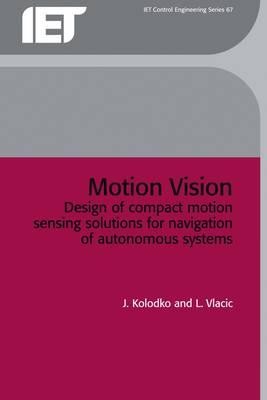
- We will send in 10–14 business days.
- Author: J Kolodko
- Publisher: Institution of Engineering & Technology
- ISBN-10: 0863414532
- ISBN-13: 9780863414534
- Format: 15.6 x 23.4 x 2.5 cm, kieti viršeliai
- Language: English
- SAVE -10% with code: EXTRA
Reviews
Description
Segmenting the environment surrounding an autonomous vehicle into coherently moving regions is a vital first step towards intelligent autonomous navigation. Without this temporal information, navigation becomes a simple obstacle avoidance scheme that is inappropriate in highly dynamic environments such as roadways and places where many people congregate.
The book begins by looking at the problem of motion estimation from biological, algorithmic and digital perspectives. It goes on to describe an algorithm that fits with the motion processing model, and hardware and software constraints. This algorithm is based on the optical flow constraint equation and introduces range information to resolve the depth-velocity ambiguity, which is critical for autonomous navigation. Finally, implementation of the algorithm in digital hardware is described in detail, covering both the initial motion processing model and the chosen hardware platforms, and the global functional structure of the system.
EXTRA 10 % discount with code: EXTRA
The promotion ends in 21d.09:17:30
The discount code is valid when purchasing from 10 €. Discounts do not stack.
- Author: J Kolodko
- Publisher: Institution of Engineering & Technology
- ISBN-10: 0863414532
- ISBN-13: 9780863414534
- Format: 15.6 x 23.4 x 2.5 cm, kieti viršeliai
- Language: English English
Segmenting the environment surrounding an autonomous vehicle into coherently moving regions is a vital first step towards intelligent autonomous navigation. Without this temporal information, navigation becomes a simple obstacle avoidance scheme that is inappropriate in highly dynamic environments such as roadways and places where many people congregate.
The book begins by looking at the problem of motion estimation from biological, algorithmic and digital perspectives. It goes on to describe an algorithm that fits with the motion processing model, and hardware and software constraints. This algorithm is based on the optical flow constraint equation and introduces range information to resolve the depth-velocity ambiguity, which is critical for autonomous navigation. Finally, implementation of the algorithm in digital hardware is described in detail, covering both the initial motion processing model and the chosen hardware platforms, and the global functional structure of the system.


Reviews